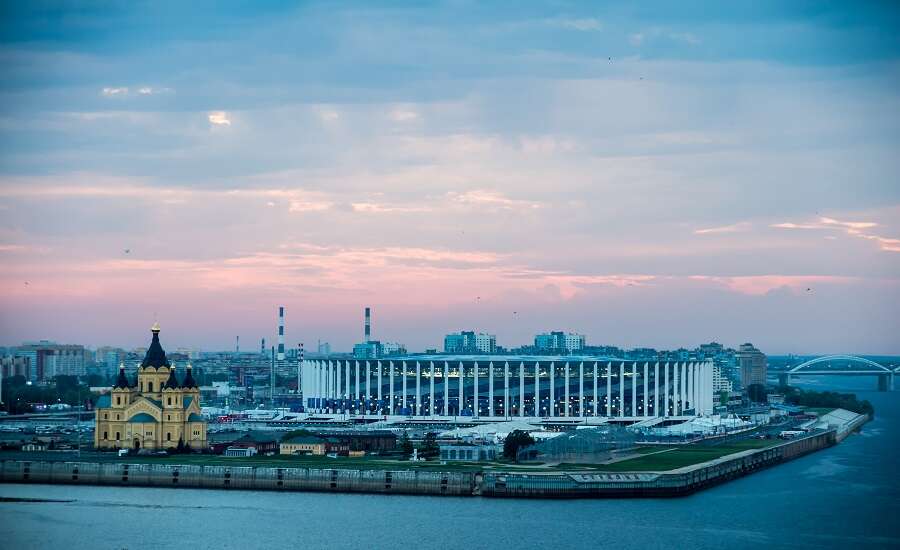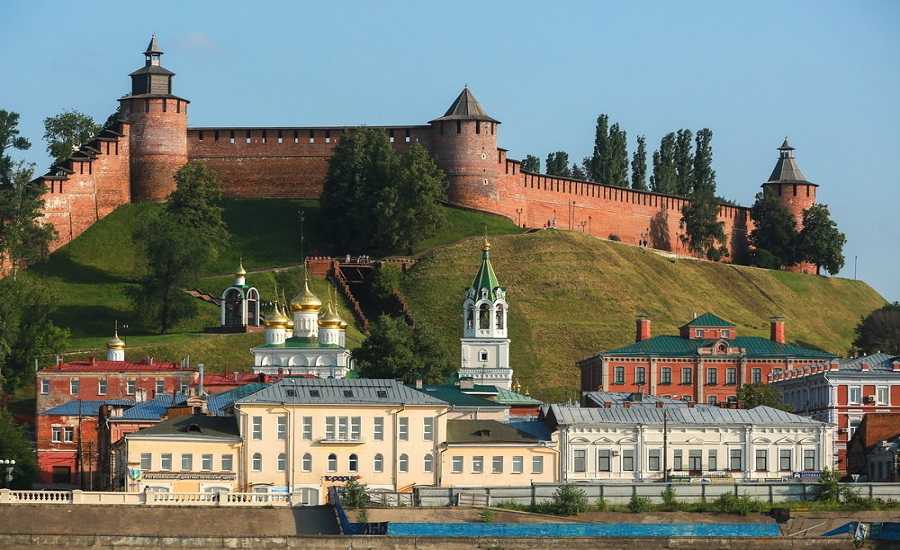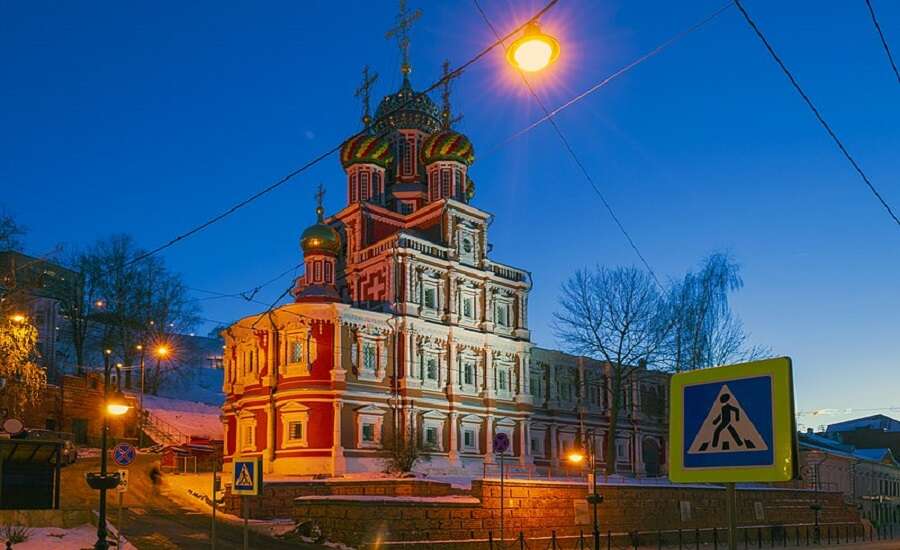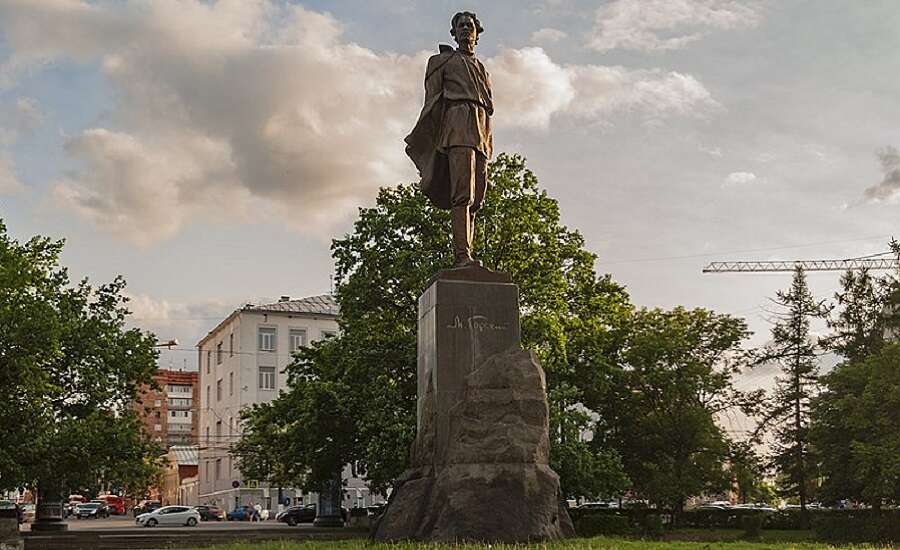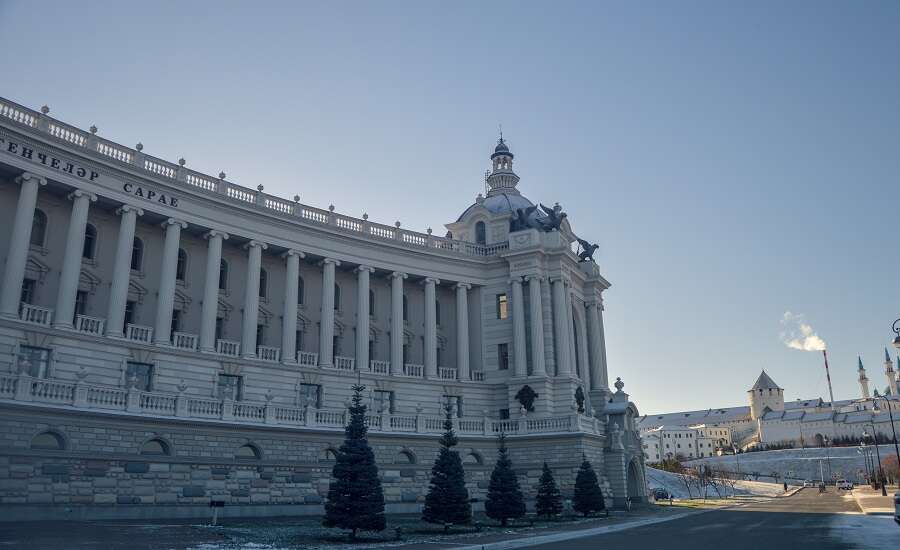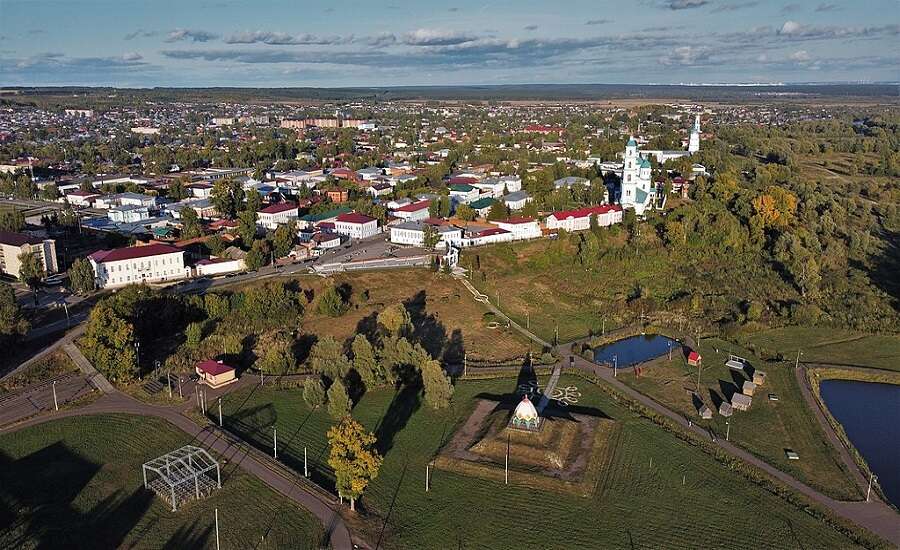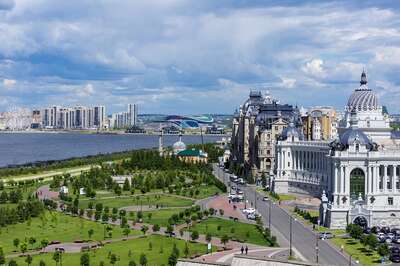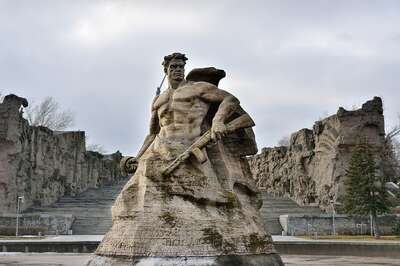Volga Federal District
Photo by Valeriy Kryukov on Unsplash
What is There to See in the Volga Region?
- The biggest and most famous city of the Volga Federal District is Nizhny Novgorod. This town is full of history and culture, including a variety of beautiful and magnificent churches, a monastery and the legendary trade fair Makarievskaya.
- Maxim Gorky Museum. Renowned writer Maxim Gorky was born in Nizhny Novgorod and many of his works were written there. His house is now a museum.
- The Tatarstan Republic with Kazan as its capital serves as a connection between Europe and Asia. The region boasts picturesque nature – great rivers, enchanted forests and beautiful lakes.
- Kazan itself should be visited for its ancient history and architectural constructions. On top of that, the city is a magical combination between Muslem and Orthodox cultures.
- If you’re interested in traveling to the Tatar region, don’t miss the unique opportunity to participate in the festivities for the Sabantuy holiday. It starts at the end of May and ends at the end of June.
Nizhny Novgorod
Nizhny Novgorod was founded in 1221. During Soviet times it was renamed Gorky and remained thus until 1991. The city is situated at the convergence of two rivers - the Oka and Volga. The region's climate is moderate continental with an average temperature of approximately -12°C in January and +18°C in July.
Nizhny Novgorod was founded by the grand duke of Vladimir Yury Vsevoldovich. It began as a fortress named Novgorod (the word means "new city," however it was most likely named in honor of the famous Russian city Novgorod, which is located on Volhov River). To avoid the confusion that would be generated by having two cities with the same name, the prefix "nizhny" was added. The legend about the city foundation is very interesting. The title of the architectural capital of Russia was conferred on Nizhny Novgorod in 2001. Its inhabitants call it also "The third capital of Russia" (after Moscow and St. Petersburg). The beginnings of this ancient city are connected with a lot of old legends. One of them speaks about a Mordvinian called Starling who in ancient times lived on the right bank of the river Oka. He was a friend and helper of the Robber-Nightingale (a very famous character of Russian folklore) and had many wives and children. Not far from his house the wizard Woodpecker lived. Once Starling went to him and asked about the future of his family. Woodpecker answered that Starling's children would live long lives on their land and will be very rich and happy - but only if they didn't quarrel. In this case, the land would be occupied by Russian people, who will build a big city upon it. Descendants of Starling lived peacefully near Oka for many years, but at last they began to quarrel with each other. Before long the Woodpecker's prediction came true. The Slavic duke Andrey Bogolyubsky drove them from Oka and his nephew Youry Vsevolodovich founded New Low City (Nizhny Novgorod).
Thus starting from the 14th century the city always appears under the name of Nizhny Novgorod. The name refers to the city's low-lying location. Thanks to this advantageous geographical position Nizhny Novgorod had gained major importance as a cultural and trade center.
The detailed history of Nizhny Novgorod can be summarised as follows:
- In 1392, under Vasiliy I, Nizhny Novgorod joined the Moscow principality and soon became a strong Russian addition in the struggle against the Kazan Khanate.
- In 1506-11, under Vasiliy III, the new stone Kremlin was built.
- Starting from the second part of the 16th century the city became one of the biggest trade and crafts centers in the Moscow state.
- In 1611-12 the militia of Kuz'ma Minin and Duke D. M. Pozharskogo against polish intervention was formed in the town.
- In the 19th century the flour-milling industry was developed because of its close connection with the river traffic.
- In 1817 the famous Makari'evskaya fair began in the town.
- In 1862 the city became connected with Moscow via a railroad track.
- In 1932 Nizhny Novgorod was renamed Gorky in honor of the famous writer Maxim Gorky, who was born in the city.
- In 1991 the city regained its historical name.
CC BY-SA 4.0 by on Wikipedia
The Kremlin of Nizhny Novgorod was built in 1221 and has always played a very important role in Slavic history. Its architecture is similar to the ancient lapidary style. The Kremlins of Moscow and other Russian cities were usually richly decorated with different architectural details, but the Kremlin of Nizhny Novgorod stayed simple and even stern, like a strong soldier. It was an important defense building. The first building of the Kremlin was made from wood, but in 1500 an unknown architect found a new Kremlin construction method, which consisted of building from stone. Afterwards, the Kremlin was rebuilt again by the famous architect Peter Fryazin. The reconstruction of the Kremlin and of its walls began in the 10th century and continues to this day.
The Church Rojdestvenskaya (Stroganovskaya) is the first thing that people see when they come to Nizhny Novgorod by ship. This church was built by the famous helper of Peter I, a rich merchantman and manufacturer named G. D. Stroganov. The architectural style of this church is Baroque mixed with some Russian traditional details. The result of this mixture is very beautiful: a richly decorated facade, multicolored domes and an original bell tower.
CC BY-SA 4.0 by Алексей Трефилов on Wikipedia
The Cathedral of Alexander Nevsky is one of the biggest ancient buildings of Nizhny Novgorod. It was made in memory of the legendary Russian duke and military leader of the 13th century Alexander Nevsky. This cathedral was built in 1881 on the junction of two of the greatest Russian rivers: the Volga and the Oka. The designers tried to create the Cathedral in a Russian middle age epoch style, so a five-headed cathedral was built but its heads were made in the form of onion shaped roofs instead of round domes. Many aspects of the Cathedral seem too large and out of proportion with each other, but it was done with the hope that the Cathedral would be easily visible from a distance.
The nun Dionisy founded the Monastery Pechersky not far from Nizhny Novgorod in the years 1328-1330. Under his control the monastery very quickly became a rich cultural center, a meeting place and a school. People could get a good education here, and one of the most important literary samples of the 14th century - the chronicle by the nun Lawrenty written in 1377 - was created in this monastery. In 1597 the monastery was destroyed by a landslide, and people were afraid to rebuild it again in the same location. The new Pechersky Monastery was founded closer to Nizhny Novgorod, but the building only lasted 30 years due to the devastating wars of the 17th century. They again rebuilt the Monastery and it was this third attempt which still stands today. The main building - the Cathedral Voznesensky - was finished in 1632 and the churches Uspenskaya and Evfimievskaya and the nuns' residences were completed by 1648. The gifted architect Antip Konstantinov was responsible for its completion and impressive appearance.
The legendary Trade Fair Makarievskaya is the main trade fair in Nizhny Novgorod. It was founded in 1817 on the left bank of the Oka River. 60 trade and warehouse buildings were erected around the cathedral and general fair house. In 1890 the trade house was rebuilt by architects A. I. von Gogen, G. A. Trambitsky and K. V. Treiman in a 17th-century Russian architectural style, with an eclectic assortment of interior decorations. The Trade Fair of Nizhny Novgorod still exists today. The famous proverb "Moscow is the heart of Russia, St. Petersburg is its head, and Nizhniy Novgorod is its pocket" appeared due to this fair.
The street Bolshaya Pokrovskaya is one of the first streets built in Nizhny Novgorod and now the only pedestrian zone in the city. It is placed in the oldest part of Nizhny Novgorod, between the square of Minin and Pojarsky (heroes of Russian history), and Gorky square. The impressive houses on this street are ancient and very beautiful monuments of Russian architecture.
One can only imagine just how many people and events the river-boat station in Nizhny Novgorod has seen during seven and a half centuries. In the beginning it was a group of berths and landing stages, but during the time of merchants, Nizhny Novgorod turned into a big cluster of warehouses, taverns and doss-houses. Boats belonging to Alexander Nevsky and the famous Russian adventurer Afanacy Nikitin came here after their respective journeys and campaigns. The army of Tsar Ivan the Terrible departed from this river-boat station in the 16th century, and the Volga's famous military flotilla departed from here in 1918 as well. Now there is a monument of this flotilla located on a square near the station. Every ship that left the city from this station is accompanied by the old music march called "The Farewell of Slavyanka"
CC BY-SA 4.0 by Алексей Трефилов on Wikipedia
As already noted, for a long time Nizhniy Novgorod had the same name as the celebrated Russian writer Maxim Gorky. It was his birthplace and place of residence for the majority of his life. Alexey Peshkov (his given name) was born in the outskirts of Nizhny Novgorod, on Kovalikhinskaya Street. When he was three years old his father died and his mother and grandmother moved with him into his grandfather's house. Alexey grew up there, then he worked in a variety of places in the city. Many of his literary and dramatic works were thought up and written here in his home town. One of them, "The Song about Stormy Petrel" gave the sculptor V. Moukhina the idea to construct a monument of Gorky, now found on Gorky Square. Later, when Gorky had already become a famous writer, he moved to another house on Kovalikhinskaya Street. Many famous people often visited him there, such as the singer F. Shalyapin and the writer L. Andreev. The house has been turned into a memorial museum in Gorky's honor.
These days Nizhny Novgorod claims 70% of the Russian machine building industry, including car and shipbuilding. The metallurgy, construction, chemical, wood and light industries are also established around the region. Food industries including mills, meat, macaroni, confectioner fabrics, beer and champagne factories are also found here. Near Nizhny Novgorod, on the Volga, there is the Gorky GES (a hydro-electric power plant), as well as the Balahinskaya GRES. Gas pipelines from Saratov and Manninbaev and oil pipelines from Al'met'evsk all are connected to Nizny Novgorod and lead to the city. Nizhny Novgorod has a major train station, seaport, airport and a metro that started in 1985 and is a huge district that offers many different adventures for tourists.
Republic of Tatarstan
The Tatarstan Republic is situated in the far east of Europe, where the Volga and Kama rivers meet. The Republic serves as a bridge between the European and Asian parts of Russia. The capital is Kazan, which has a population of 1,086,900 people. The climate is temperate continental with warm and sometimes even hot summers and a moderately cold winter. The average temperature in winter is -14 degrees Celsius and in summer its +19 degrees Celsius. The area is approximately 67.8 thousand square km. The main languages are Russian and Tatar.
The Tatarstan Republic is ecologically rich and unique, and its history is full of dramatic scenes and sudden turns. Its people have created their own separate world on this land. Great European rivers, the Volga, and Kama, the "Shishkin" forests, picturesque lakes, the poetic Yelabouga are only some of the highlights of this region. The Boulgar town archeological dig is also a must see, along with the Raifsky Monastery with its unusual fate and rare beauty, the island town of Sviyazhsk, wonderful Kazan (the capital of the Republic), people famous for their hospitality and much more will conquer your heart and provide memories that will last you a lifetime.
Photo by nour tayeh on Unsplash
Kazan turned 1000 in 2005. Its history is connected with that of its Kremlin, which is associated with many entertaining and even informative legends and historical anecdotes.
Out of all the ancient buildings and constructions in the Kremlin, only the Suumbike tower has been preserved. This tower was named after the last Kazan tsarina, who is the subject of many legends and stories, all of which mention her beauty. Suumbike was loved by the Tatar people. One of the legends says that she demanded that Ivan the Terrible have a seven circle tower built in the short span of seven days and nights in exchange for her benevolence. After the tower was built, Suumbike climbed to the top of it and threw herself down.
The Kazan Kremlin is a wonderful symbol of the combination between Moslem and Orthodox cultures, a symbol of West meeting East. In 2000 it was included in the UNESCO's world heritage list. This is a wonderful place for walks. In the central part you can admire the most ancient temples in the city. Among them is the Peter and Paul Cathedral, which was erected in memory of Peter the First's visit to the city and the Mardzhani (Unousovskaya) Mosque, constructed with the permission of Catherine the second.
The Raifsky Bogoroditsky Monastery, which is not far from Kazan and surrounded by fairy forests and lakes, was founded in 1661. Nowadays, this monastery, an architectural masterpiece, is one of the most popular places of pilgrimage; people from all around the world come here to see it. Its world-renowned relics attract tourists both religious and secular.
The island of Sviyazhsk is situated at the convergence of the Sviyaga River with the Volga. The island was built by Ivan the Terrible as an outpost to occupy Kazan. Legend has it that the town here was built in one night. The architectural complexes here consist of wonderfully preserved temples, including the most ancient wooden Trinity Church (1551), Nikol Church and Ouspensk Cathedral. In the Ouspensk Cathedral you can see well-preserved frescoes depicting an array of biblical scenes.
Several hours down the Volga is a place considered very sacred to all citizens of Tatarstan. In Velikiye Bulgary the essential principles of the Tatar State system were laid, and Islam adopted. The remains of the ancient town remind us of the most glorious period in the history of Velikiye Bulgary. Nowadays more than 100 fragments of ancient constructions on the site of this settlement can be explored by tourists.
CC BY-SA 4.0 by Vyacheslav Bukharov on Wikipedia
The small ancient town of Yelabouga is comfortably set on the banks of the river Kama surrounded by forests once painted by the famous Russian landscape painter Ivan Shishkin. Here you can also find his memorial estate and the memorial estate of Nadezhda Durova, the heroine of the Patriotic War of 1812. Also, Marina Tsvetaeva, the well- known Russian poet, was buried in the old town cemetery.
Not far from Yelabouga is the famous "Chertovo" cemetery, which contains the fortified remains of an ancient Volga-region tribe. In the eastern part of the town are the remains of 10th-century Bulgary fortifications. The intact stone tower of the "Chertovo" settlement is a symbol of Yelabouga.
One of the most unique, famous and beloved Tatar holidays is called Sabantuy. It starts at the end of May in the villages and districts of the region and finishes at the end of June in the towns of the Republic. Don't miss it.
